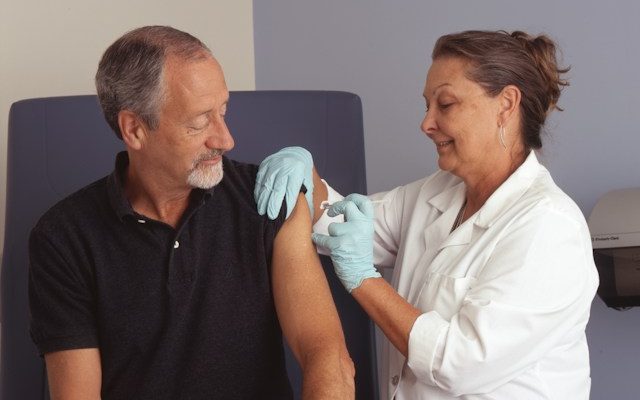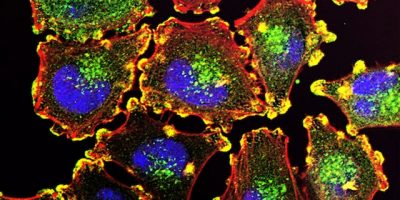Prostate cancer is one of the most prevalent forms of cancer among men worldwide, affecting millions annually. This malignancy originates in the prostate gland, a crucial component of the male reproductive system. While it often progresses slowly, certain aggressive forms demand prompt intervention.
Treatment approaches for prostate cancer vary based on factors like the stage of the cancer, its aggressiveness, and the patient’s overall health. Understanding treatment options is essential in formulating a personalized approach to combat this disease.
Treatment Options
Navigating prostate cancer treatment options can be daunting. With various approaches available, from active surveillance to surgery, radiation therapy, hormone therapy, and chemotherapy, each decision carries significant implications. Understanding these options and their potential impact is crucial for patients and their loved ones.
In this comprehensive guide, we delve into five key treatment modalities for prostate cancer, exploring their benefits, risks, and considerations to empower individuals in making informed decisions about their healthcare journey.
Active Surveillance
Active surveillance involves closely monitoring the cancer’s progression without immediate intervention. It’s typically recommended for men with low-risk prostate cancer, where the tumor is slow-growing and unlikely to cause significant harm.
Patients undergo regular check-ups, including PSA tests, digital rectal exams, and sometimes repeat biopsies, to monitor any changes in the cancer’s behavior. If there’s evidence of disease progression, treatment options such as surgery or radiation therapy may be considered.
Surgery (Radical Prostatectomy)
Radical prostatectomy involves surgically removing the entire prostate gland along with nearby tissues, such as seminal vesicles and surrounding lymph nodes. Doctors often recommend this option for localized prostate cancer, where the disease hasn’t spread beyond the prostate gland.
Surgeons can perform the procedure through open surgery or minimally invasive techniques like laparoscopic or robotic-assisted surgery. Focal therapy prostate cancer is becoming a popular option.
While effective in removing the cancerous tissue, surgery carries risks such as urinary incontinence and erectile dysfunction. Recovery time varies, with patients needing to follow up with regular PSA tests to monitor for recurrence.
Radiation Therapy
Radiation therapy utilizes high-energy rays to target and destroy cancer cells in the prostate gland. It’s a standard treatment option for localized prostate cancer and can be delivered externally or internally.
External beam radiation therapy involves directing radiation from outside the body toward the cancerous tissue, while brachytherapy involves implanting radioactive seeds directly into the prostate. Side effects may include urinary problems, bowel irritation, and erectile dysfunction.
Radiation therapy is often used alone or in combination with hormone therapy for more advanced cases or as adjuvant therapy after surgery.
Hormone Therapy (Androgen Deprivation Therapy)
Hormone therapy aims to reduce the levels of male hormones (androgens) in the body, as these hormones can stimulate prostate cancer growth. It is commonly used in advanced or metastatic prostate cancer to slow down cancer growth or shrink the tumor.
Hormone therapy can be achieved through medications that block the production of androgens or medications that inhibit their action.
While initially effective, cancer cells may eventually become resistant to hormone therapy, necessitating alternative treatments. Side effects may include hot flashes, loss of libido, fatigue, and osteoporosis.
Chemotherapy
Chemotherapy involves using drugs to kill cancer cells or inhibit their growth. It’s typically reserved for advanced prostate cancer that no longer responds to hormone therapy. Chemotherapy drugs may be administered intravenously or orally, and treatment regimens vary depending on the individual’s condition and response.
While chemotherapy can help control symptoms and prolong survival, it’s associated with various side effects, such as nausea, hair loss, fatigue, and increased susceptibility to infections.
Research continues to explore new chemotherapy drugs and combination therapies to improve outcomes and reduce side effects.
Conclusion
Prostate cancer treatment options encompass a range of approaches tailored to each patient’s unique circumstances. From active surveillance for low-risk cases to aggressive treatments like surgery, radiation therapy, hormone therapy, and chemotherapy for advanced disease, the goal is to achieve optimal outcomes while minimizing side effects.
Treatment decisions should involve a comprehensive discussion between patients and their healthcare providers, considering factors such as the cancer stage, aggressiveness, potential side effects, and the patient’s overall health and preferences.
Continued research and advancements in treatment modalities offer hope for improved outcomes and quality of life for individuals battling prostate cancer. If you or a loved one has prostate cancer, ensure you follow your doctor’s advice carefully.
Read More: How Asbestos Can Cause Mesothelioma














Comments